SWR Television, 5.45 a.m.
The province in the south-east of Austria has a varied landscape: the Alps dominate in the north, overlooked by the Dachstein massif and its glacier. In the south lie gentle chains of hills. The soil there is fertile, wine, apples and pumpkins thrive. But human lateral heads are also at home here: they form the mysterious alliance of the "Apple Men of Puch" or build a steaming and blinking world machine.
SWR Television, 4.30 p.m.
In this episode, star chef Cliff Hämmerle and his cooking students Verena and Michel are in front of the beautiful hunting lodge Karlsbrunn. Cliff has chosen a French dessert as the recipe: Moelleux au Chocolat with red wine sorbet. A mixture of red wine and sugar, briefly boiled, provides the binding and creaminess of the red wine sorbet. The juice of fresh blood oranges and grapefruits gives the delicious ice cream a fresh, fruity note. This is accompanied by fruit and wonderful ideas for decorating a festive dessert plate.
WDR Television, 1.15 p.m.
The Eifel is famous for its red wine, which grows spectacularly on steep slopes here. But there are also other developments: more and more volcanic cones are disappearing, even though the earth is bubbling. There are always smaller and larger earthquakes and climate change is altering the water cycle of the Eifel.
arte, 4.55 p.m.
Valladolid, the metropolis of 300,000 inhabitants in the Castile-León region, was once the capital of the Kingdom of Castile and even of the whole of Spain. Today, the region is known worldwide for its special wines.
MDR Television, 22.05
If there was always something missing in the GDR, one thing was always there: Alcohol. Of course, there was a lack of noble drops, but the simple schnapps filled many a gap on the shelves. And there was no lack of pet names for the high-proof drinks: "Blauer Würger", Kali, Pfeffi. Although the GDR saw itself as a "sober republic", alcohol consumption rose so alarmingly in the 1960s that the party's reports feared "health-endangering proportions". The state tried to put a stop to this development. On 1 February 1971, the GDR Council of Ministers reacted with a hefty price increase for "hard" drinks. However, sales of wine and beer rose only briefly. Not everyone liked the local barley juice. As early as 1957, a large-scale experiment with barley flakes had sealed the end of the German Purity Law for some beers in the GDR. For reasons of economy, malt was allowed to be replaced by barley flakes, rice and maize semolina and sugar. Many of the beers were cloudy, and this thriftiness could be seen in their appearance. If the well-known beers were labelled "export", this was unfortunately usually to be taken very literally. Radeberger and Wernesgrüner were almost never found in the popular department stores and thus became a currency of their own in the procurement of scarce goods. Real money, however, had to be used now and then by the state planning commission for "flash imports". The "Aktion Weihnachtsteller" (Christmas Plate Campaign) provided wine and sparkling wine from Spain, France or West Germany. But since the GDR could otherwise hardly help itself to the international spirits market, the domestic industry had to follow the international beverage fashions. More and more new distillates enriched the East German beverage lists. Classic spirits like "Kristall" vodka or "Nordhäuser Doppelkorn" - which survived the fall of communism - and exotic ones like "Sambalita" and "Sabrina Tropic" vied for the consumer's favour. The film tells an interesting and entertaining piece of East German economic history with a wink. Label collectors, brewers, distillers, factory managers and scientists provide insights into a special history of the GDR.
ANIXE, 1.30 a.m.
Following in the footsteps of the first settlers in the Barossa Valley, one comes across one of the best South Australian wines. The climate and the location right up to the southern ocean give the red wines their special flavour.
rbb television, 2.00 p.m.
The culinary journey goes to the Palatinate in the third episode. The five country ladies visit the vineyard of winemaker Kathrin Otte. Together with her partner Christoph and her parents, she runs the three-hundred-year-old family vineyard in Deidesheim. The 28-year-old is pursuing her idea of growing wine in a very traditional way with great enthusiasm. This includes picking the grapes by hand and cultivating the vineyards close to nature. Kathrin has joined forces with like-minded young winemakers from the area to bring a breath of fresh air to the wine region with joint activities.
3sat, 5.45 p.m.
The forest, the Rhine and the wine - these three things not only characterise the central landscapes of the Palatinate, but also reveal a lot about the soul of the "German Tuscany". Where the mountains of the Palatinate Forest slowly disappear, the first vineyards appear on the edge of the Haardt. Along the German Wine Route, one winegrowing village follows the next, bordered by the wine metropolises of Landau, Neustadt and Bad Dürkheim.
SWR Television, 8.15 p.m.
With the Federal Horticultural Show, Heilbronn is the blossoming centre of the state this year. But instead of relying solely on flowers and colourful flower beds, a new city quarter is being built on a formerly dreary industrial site, where more than 3,000 people will find a new home in modern flats directly on the Neckar River. For example, in the tallest wooden house in Germany. SWR presenter Annette Krause visits not only the highlights of the Federal Horticultural Show but also the city and discovers that Heilbronn is blossoming again everywhere. The Experimenta, a scientific adventure world, has been given a spectacular new building, and on the Waldheide, where Pershing missiles were once stationed, a mysterious nature has returned. The Wartberg offers not only the best view of the city, but also the opportunity to discover one of Baden-Württemberg's best wine regions.
arte, 12.00 p.m.
The programme is also available online from 08/06 to 15/06 on the ARTE internet portal. The area around the small town of Arbois in the Département Jura is known for its winegrowing. Here, Evelyne and Pascal press a 100 percent natural wine from organically grown grapes. The new episodes of the documentary series show French landscapes in all their diversity through aerial photographs and offer an unusual view of the most beautiful natural and cultural monuments. The ground shots provide deep insights into the special features and charms of each region and show treasures of nature, architectural masterpieces and cultural highlights. And finally, people who contribute in their own way to the preservation of these landscapes have their say. They talk about their everyday life, their profession and their love for the region.
NDR Television, 3.35 p.m.
Where is the "Tuscany of the East"? This cultural landscape is located in southern Moravia between the magnificent castles of Valtice and Lednice and is a UNESCO World Heritage Site. Wine from this region is not as famous as Czech beer. Quite unfairly, as "Hanseblick" presenter Stefanie Gromes wants to prove. Therefore, she is on her way to the southeasternmost part of the Czech Republic for the grape harvest. Early in the morning she will pick the typical Palava grapes with winemaker Jan and also process them in the family business. She is also getting to know the next generation of winegrowers at the oldest wine school in the Czech Republic. Finally, in the wine salon at Valtice Castle, she will be able to taste the 100 best wines from South Moravia together with a sommelier.
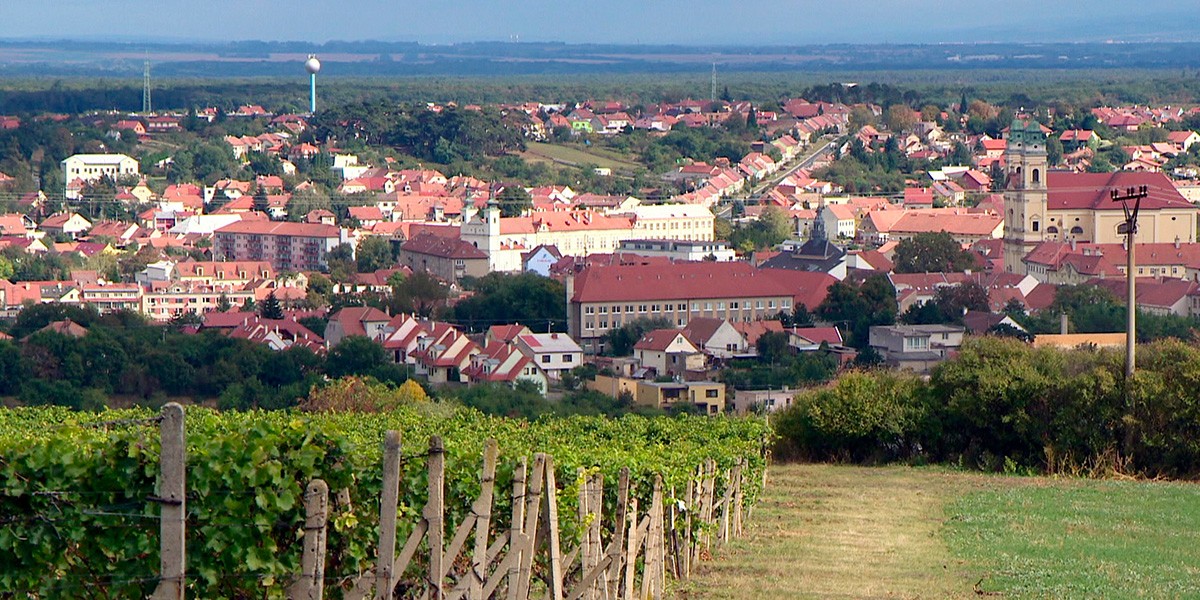 |
hr-television, 4.00 p.m.
An excursion to the neighbours in Rheinhessen is worthwhile. By ferry it is only a Katzensprung across the Rhine. There you will pass through gently rolling vineyards with views of many windmills and many small towns ending in "-heim". In each of them there is more than one winery. In Germany's largest wine-growing region, you can find the right wine for every taste. Nina Thomas visits some of the many dedicated winegrowers in their vineyards. Of course, there is food to go with the wonderful wine - from a hearty Winzervesper to pike-perch with black pudding to rack of lamb and chocolate dessert.
SWR Television, 8.40 a.m.
The fisherman and winegrower Stefan Riebel and the wine and vegetable farmer Stefanie Wehrle professionally continue a family tradition that has been cultivated on the island for many centuries. In the past, the monks were the lords of the island and employed the farmers in agriculture. Since the mighty monastery was abandoned by the last monks in 1803, the former feudatories took over the land in 1830, laying the foundation for today's Vegetable Island.
Das Erste (ARD), 12.30 p.m.
Normally, the self-confident Munich wine merchant Sonja Franke (Suzanne von Borsody) is not easily upset. But when she catches her husband Heiner (Wolf Roth) in flagrante delicto with his mistress, Sonja's composure is over: she promptly ends up in court for speeding, where the fastidious judge Alain Mayer revokes her driving licence. So, of necessity, Sonja has to travel by train to her most important winemaker. Sonja's wine business takes a turn for the better when she meets Alain's son Robert (Florian David Fitz) by chance and learns that Alain comes from a renowned Alsatian winegrowing family. Robert, who unlike his father carries on the family's "wine tradition", becomes Sonja's business partner and, so to speak, the saviour of her business, which has been in trouble due to the loss of the wine shipment.
Bavarian Television, 3.15 p.m.
Gernstl travels to the Veneto. The Italian region stretches from the Alps to the Po Valley and is bordered by Lake Garda in the west and the Adriatic Sea in the east. Gernstl's investigations begin in Valdobbiadene, in the heart of the Veneto. Nestled in the Trevesin hills is a lonely hut, no one is there, yet everything you need for a snack can be found: cheese, salami, bread and chilled Prosecco - the semi-sparkling wine has its home in the Veneto. On the cemetery island of San Michele, wine lovers preserve the vines of a former monastery garden and the last historic wine cellar in Venice. The tour ends with wine, good conversation and regional delicacies.
WDR Television, 4.25 p.m.
Kay Thiel from Niederdollendorf has recultivated an ancient vineyard in the Siebengebirge as a part-time vintner. Many plots in the steep vineyards of the Siebengebirge were abandoned decades ago because they were too labour-intensive. But since more and more high-quality wines are in demand, cultivation has become worthwhile again. Now, rare grapes thrive below the Petersberg, which Kay Thiel harvests together with friends.
WDR Television, 8.15 p.m.
To this day, people associate it with proud knight's castles, steep vineyards, cheerful conviviality and picturesque towns. But the Rhine is much more than just a romantic river.
3sat, 2.30 p.m.
Only 85 kilometres long, the Ahr meanders through a valley characterised by viticulture. Andrea Grießmann hikes from Sinzig, where the Ahr flows into the Rhine, to its source in Blankenheim. She is on the way on the AhrSteig, on the Red Wine Trail and on winding paths. In between, she stops at wineries, in romantic Walporzheim and at the Marienthal monastery. She meets a wine "alchemist" and goes truffle hunting.
3sat, 6.05 a.m.
The province in the south-east of Austria has a varied landscape: the Alps dominate in the north, overlooked by the Dachstein massif and its glacier. In the south lie gentle chains of hills. The soil there is fertile, wine, apples and pumpkins thrive. But human lateral heads are also at home here: they form the mysterious alliance of the "Apple Men of Puch" or build a steaming and blinking world machine.
NDR Television, 9.00 p.m.
The well-known tourist centres of Tuscany, visited by holidaymakers from all over the world, tend to be in the north: Florence, Pisa, the beaches of Forte dei Marmi and the wine-growing regions in Chianti. The south of Tuscany has remained something of an insider tip. Here, many things are still authentic and wild, the people are stubborn.
3sat, 3 .30 p.m.
On the island of Pico, Jörg Rheinländer climbs to the top of the mountain of the same name, which at 2351 metres is the highest peak in Portugal, and goes out to sea with a man who used to hunt whales - and now shoots them with cameras at best. On Pico, the winegrowers also cultivate a special wine culture that UNESCO has recognised as a World Heritage Site: The vines are protected by walls of lava rock against the constant winds from the sea.
hr-television, 4.00 p.m.
Bastian Fiebig and Stefan Maxeiner, two colleagues from the Frankfurt Gourmet Academy, go on a trip to Chablis in the north of Burgundy. Of course, a visit to the vineyard is not to be missed. Bastian Fiebig is a gastro-journalist and regularly takes wines with him to taste at his wine tastings at the Frankfurt Genussakademie.
SWR Television, 4.00 p.m.
Nestled between the Rhine and the Black Forest, the Ortenau is one of Germany's climatically favoured regions. The climate and fertile soils make it a veritable garden of paradise - fruit and wine-growing dominate the scene and people love to celebrate with and around their own regional specialities. Durbach is home to top wineries, such as that of the internationally award-winning Laible winegrowing family. In everyday life, the Durbach winegrowers are competitors, but once a year they sit together to choose the best Durbach Riesling - the "Jahrgangs-Klingelberger". The Weber family in Ettenheim not only owns one of the largest walnut plantations in South Baden, but has also been running a restaurant specialising in walnut menus on their winery for several years. The film presents the Ortenau with its specialities and their stories and what people make of them - in restaurants, in distilleries on wineries and at various festivals held around individual specialities.
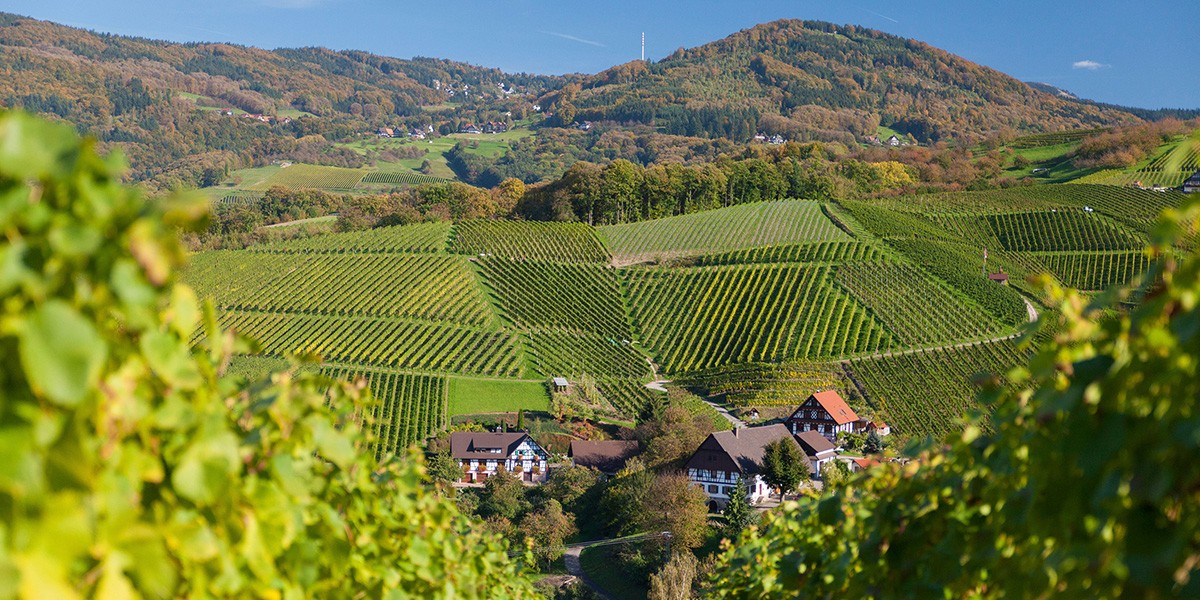 |
arte, 11.05 a.m.
When a gifted chef and an ingenious artist meet, something tasty is sure to result: star chef Gérald Passédat invites guests to his restaurant, which has Leonardo da Vinci's "Last Supper" on the menu. Together with historians, he tries to create as authentic an image as possible of the dishes of that time. This is accompanied by wine from Hervé Durand, who has reconstructed a Roman grape press with the help of archaeologists in order to press wine under authentic conditions as well. Finally, everyone gathers around the table and feasts on bread, wine and Gérald Passédat's various dishes. The conversation naturally revolves around the food served and the customs and traditions associated with it. The programme is also available online from 16/06 to 24/06 on ARTE's internet portal.
WDR Television, 11.45 a.m.
The reporter also takes a look across the border - near Kranenburg lies the largest wine-growing region in the Netherlands.
3sat, 1.10 p.m.
Summer retreat: That sounds like times gone by, picnics, experiencing nature and social events in villas or pavilions. This summer retreat is now experiencing a renaissance. In addition, traditional Heurige with their regional delicacies, the wine town of Langenlois as well as attractions such as an ostrich farm or a vineyard safari await visitors.
SWR Television, 4.00 p.m.
In contrast to the German Wine Route, the Nahe Wine Route did not really catch on. After euphoric beginnings, the project came to nothing. But the Nahe region is becoming increasingly well-known among wine lovers. Viticulture benefits from a mild climate and extremely diverse soils. The landscape offers spectacular panoramas. Spa towns such as Bad Kreuznach and Bad Sobernheim have long attracted recreation-seekers to the area, who explore the charming landscapes of the Naheland from the healing springs. Traditional wineries face the challenges of the present. The Prussian past has also left its mark on the region. In a mill on the Nahe, three generations run a leather workshop. A couple whose passion is hunting has founded a large game butchery. Whether in a hotel start-up or in the idyll of a mill: along the 130-kilometre-long Nahe Wine Route, many people are connected to the region in different ways.
Bavarian Television, 11.10 a.m.
You can take a holiday on a vineyard, for example at Chateau Carbonneau near Bordeaux, including the grape harvest and the French way of life. The owners, a winemaking couple, rent out five guest rooms there. Chateau Carbonneau is one of around 3,000 vineyards around Bordeaux. The owners, the winemaking couple Jacquie and Wilfrid Franc de Ferrière, rent out five guest rooms there. Those who stay with them are not only allowed to taste their wine, but also to help with the grape harvest. Wilfrid likes to take his guests to the barrel cellar, where the wine matures for around eleven months in oak barrels and where expert chatter about its characteristics can be celebrated in the ideal ambience. The film shows the effort that goes into making the classic Bordelais wine barrels. The barrel maker is also an amateur pilot and takes Wilfrid on a sightseeing flight to see the region and his castle from above. Wilfrid's wife Jacquie is from New Zealand, and because she has a fondness for roses, she has planted almost two hundred rose bushes on the estate. A New Zealand intern helps her with her work, and Jacquie also gives her an insight into the French way of life. She explains to her, for example, typical regional recipes, such as the one for cannellés, a dessert that would not exist without red wine. Jacquie cooks for her guests every evening. The stylish dinner is, of course, accompanied by the hotel's own wines. And caviar from the region. The film crew travels on to the centre of Bordeaux, for example to the antique dealers in the Chatrons district, but also visits other attractions that are easily accessible from Bordeaux, such as the Arcachon basin, where oysters are bred; to the Dune du Pilat, the largest shifting sand dune in Europe; to the Phare de Cordouan, the oldest lighthouse in France that is still manned, or to St. Emilion to an underground wine cellar that used to be a quarry.
Bavarian Television, 11.30 a.m.
The Middle Rhine as an expedition destination: the focus is not on the well-known towns like Bacharach, Oberwesel or St. Goar. Instead, presenter Jens Hübschen explores the valleys and gorges on the left bank of the Rhine and the world-famous cultural landscape from Bingen to Boppard from above. Katrin Kleemann and Till Gerwinat bring Reichenstein Castle in Trechtingshausen back to life. The brothers Thomas and Martin Philipp are doing something similar. They are recultivating the fallow vineyards around St. Goar and preventing viticulture from disappearing there forever.
SWR Television, 3.15 p.m.
From the Odenwald to the Black Forest, along the Neckar and to Lake Constance, the "Badisches Land" presents an almost exotic variety of landscapes where wine terraces form huge steps into the Kaiserstuhl.
SWR Television, 3.15 p.m.
Where the mountains of the Palatinate Forest slowly disappear, the first vineyards appear on the edge of the Haard. Along the German Wine Route, one winegrowing village follows the next, bordered by the wine metropolises of Landau, Neustadt and Bad Dürkheim. Here, too, the Cineflex plays to its strengths and shows towns and landscapes in a new perspective through different seasons - a view that presents the traces of history in a play of images.
WDR Television, 8.15 p.m.
To this day, people associate the Rhine with proud knight's castles, steep vineyards, cheerful conviviality and picturesque towns. But the Rhine is much more than just a romantic river.
3sat, 4.50 p.m.
The Karst has long been the most inhospitable spot on earth between Vienna and Trieste. Director Kurt Mayer travelled the Karst landscape intensively for over two years. Many farmers have their own entrance to the underworld there. There they press wine, store Karst ham or let cheese mature.
ORF 2, 21.50
The region around the Douro Valley is world-famous for port wine production and has a very long tradition in Portugal. In 2001, the area was declared a World Heritage Site by UNESCO. One stop in the unspoilt Douro Valley is the small town of Pinhão. Here, too, everything revolves around wine. Particularly worth seeing are the antique tile paintings at the train station, which depict traditional wine growing. Finally, it's worth taking a look at the banks of the Douro, where the old port wine ships lie at anchor.
ORF III, 8.15 pm
Styria - that is scenic richness from rock massifs to lush alpine pastures, from wine regions to waterfalls. Styrian director Alfred Ninaus has captured the most beautiful places on film and provides insights into the diversity of the province.
NDR Television, 23.50
Without any previous knowledge, Lucas Stratmann mingled with the harvest workers for a week and hired himself out as a trainee on the vineyard. Early in the morning, Lucas has to pack buckets and hots in the dark _ then they all head, often in the thick fog of the Moselle, up to the steep terraces where Riesling & Co. ripen. His fellow harvesters are mostly from Romania and hardly speak a word of German.
3sat, 11.45 a.m.
It is one of the most beautiful spectacles of nature when the apricot trees begin to blossom in the Wachau in spring, transforming the entire region into a fragrant sea of blossoms. The winding Danube valley, the floodplain forests, rock formations and man-made vineyard terraces are UNESCO natural monuments. The Wachau has been wine country since Roman times - today the "Land am Strome" can compete with any wine-growing region in the world with its white wines.
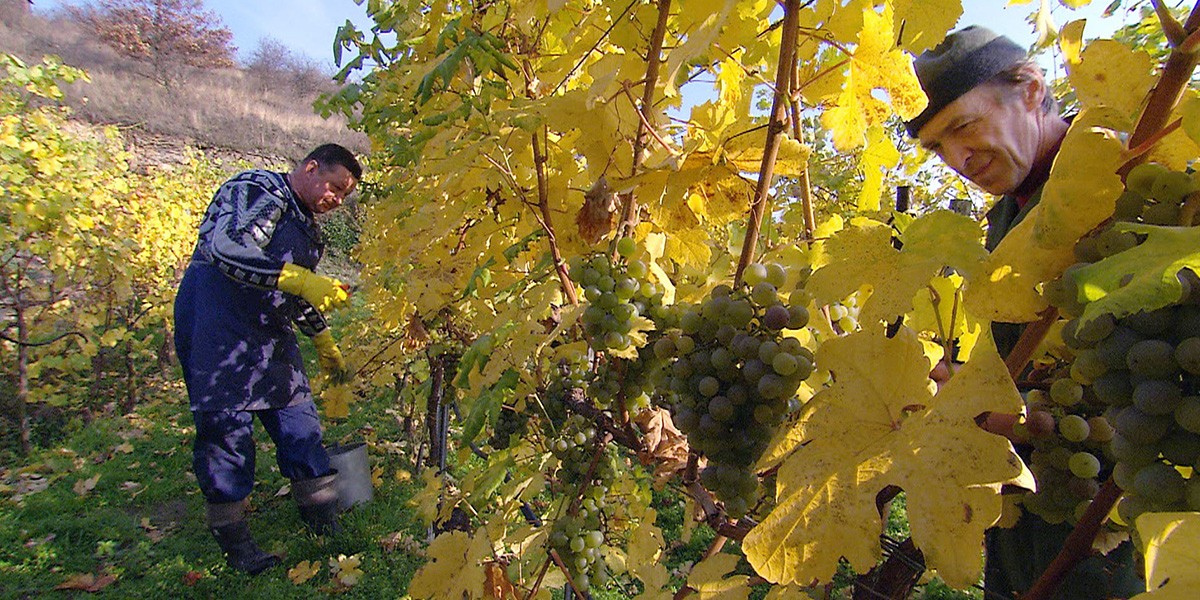 |
ZDFinfo, 8.15 p.m.
Fake honey, adulterated olive oil or falsely labelled wine - everywhere in Europe, including Germany, fake food is traded and sold. Wine or olive oil in a bottle can be from different producers from different countries. The more it is mixed, the more likely it is to be counterfeit. And the longer and more opaque the supply chains, the easier it is for counterfeiters to cover their tracks. Food with different origins poses a major challenge for authorities and investigators. Are current legal regulations sufficient? And what responsibility do manufacturers and food retailers bear? The documentary accompanies the inspectors on their search for clues. How much safety can they guarantee? The Federal Association of Food Inspectors (Bundesverband der Lebensmittelkontrolleure) criticises that food inspection in Germany can only fulfil its legal mandate inadequately. The reason: a chronic lack of staff.
Bavarian Television, 1.30 p.m.
The community of Zell, which gives its name to the Zellertal valley in Rhineland-Palatinate, was once an important place of pilgrimage. Wine from the Schwarzer Herrgott, a vineyard site in the Zellertal, was still the talk of the town a hundred years ago. Jens Hübschen embarks on a journey through time in this undiscovered Zellertal, tasting history in the form of old wine and discovering traces of the past in cellars, in storehouses, behind old walls and wallpaper. And he explores how the people of Zellertal deal with their history, which traditions are important to them, and what they expect from the future. The history and the stories of the people make the journey through this small, unknown valley a special, unforgettable experience.
3sat, 2.00 p.m.
Thanks to constant ash rains, the slopes of Mount Etna are among the most fertile in all of Italy. That is why the inhabitants of Catania accept the danger and grow the best oranges and excellent wine there. "A volcano that smokes does not explode," they say.
3sat, 3 .30 p.m.
The landscape of the Canary Island Lanzarote is marked by volcanic cylinders that bear witness to the battle between fire and water. Wind and ash have made the land extremely fertile. But it is not easy to farm. The excellent wines are proof of how resilient man and nature are.
ZDFneo, 6.45 a.m.
For winegrowers like Kilian Franzen and Angelina Lenz on the Calmont on the Moselle, Europe's steepest vineyard, the harvest has been starting earlier and earlier in recent years. Global warming makes it possible. Not only does it allow the fruit to ripen earlier, it also gives rise to new grape varieties that actually only grow in Italy or France.
3sat, 3 .30 p.m.
More and more young winegrowers in Alsace are converting their viticulture to be as close to nature and organic as possible. The hot and dry summer of 2018 proved them right. The biodynamic soils - despite a ban on watering - were not parched even in late summer. The sweet grapes promise an excellent wine. Among others, the film accompanies 28-year-old Catherine Hirsinger during the grape harvest, which lasts about six weeks. During this time, the entire family works almost around the clock in the vines or in the wine cellar. "We make wine with our hearts" - more and more young winemakers are joining this motto. Also Jean-Paul Schmitt, a well-known organic winegrower, who under the motto "together we are strong" constantly exchanges ideas with his former trainee, the now 30-year-old Jean Dittrich - in the meantime also a biodynamic winegrower - and treads new "near-natural paths" in winegrowing. Birgit Muth, the author of the film, is present at the creation of the best drops, climbs into the wine cellars and lets the viewers look deep into the glass: The "young wild" organic winegrowers and organic farmers provide insights into their philosophy and their recipes of biodynamic cultivation, which has long since found a growing following among wine lovers. The film accompanies the success of the noble "pure" grape juice processed into wine, which does not only create a hangover in the mind, but also in the ecological balance.
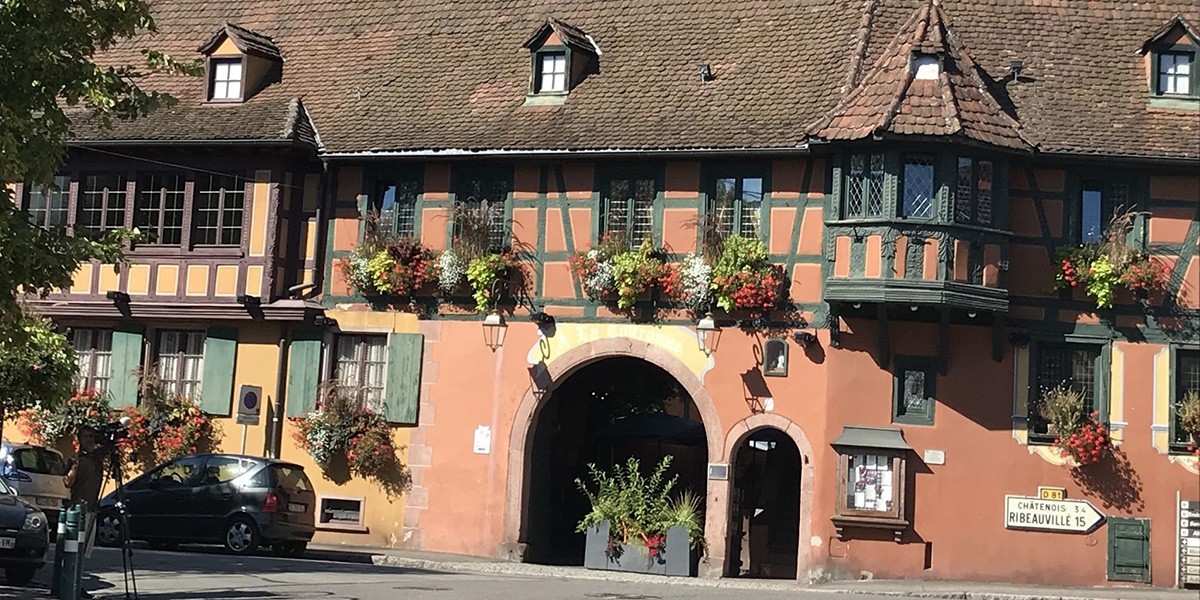 |
arte, 4.50 p.m.
Burgundy is best known for its legendary Burgundy wines. Burgundy, with its calcareous soils on which the noblest grape varieties thrive, is home to the best wines in the world. But the region was once one of the most important religious and cultural centres in Europe. Countless Romanesque churches amidst endless vineyards bear witness to the region's glorious past: Burgundy was once a stronghold of Romanism, which left its mark in monumental buildings and sculptures, magnificent frescoes and many a famous winery.
NDR Television, 5.30 p.m.
On the last day of the Mallorca tour, Tim Mälzer devotes himself entirely to regional specialities! The chef from Hamburg visits a vineyard, where the winemaker lets him in on some of the secrets of winemaking.
3sat, 9.00 p.m.
Following the "King of the Alpine Rivers" is a journey of contrasts. It rises at the "Passo della Mauria", flows through Carnia, takes in the Fella from the Canal Valley and flows out of the mountains at Gemona into the plains of Friuli. Further downstream, winemaker Emilio Bulfon has found the best conditions for cultivating old, autochthonous grape varieties on the hills and terraces along the river.
3sat, 12.10 p.m.
It is the vastness that captivates visitors to the Weinviertel. "The quarter under the Manhartsberg", so called since 1254, conveys a feeling of endlessness. It is no coincidence that the Weinviertel bears its name - viticulture determines the landscape in all its cultural forms and has always been formative for the inhabitants of this region.
ZDF, 8.15 p.m.
Discount tricks, price traps & Co. The more comfortable we feel in a shop, the looser our wallets are. Scientists are convinced that we do not only pay for a product, but also for the buying experience as such. Retailers know this and try to make shopping as pleasant as possible for us customers - for example, by using music or scents. Sound designers tinker with the sound of products and packaging - this also influences us, albeit rather unconsciously. "ZDFzeit" puts it to the test: In a wine shop, sales of French wines are to be boosted - with the right music and tasty snacks. Does it really work?
tagesschau24, 9.30 pm
Without any previous experience, Lucas Stratmann mingled with the harvest workers for a week and hired himself out as a trainee on the vineyard. Early in the morning, Lucas has to pack buckets and hots in the dark _ then they all head, often in the thick fog of the Moselle, up to the steep terraces where Riesling & Co. ripen. His fellow harvesters are mostly from Romania and hardly speak a word of German.
3sat, 5.45 pm
Even before the sun rises, in the north, in one of the Bay Area's oldest industrial regions, labourers are working in the gently rolling vineyards of Napa Valley. The winemakers there are among the largest and most famous producers of American wine.
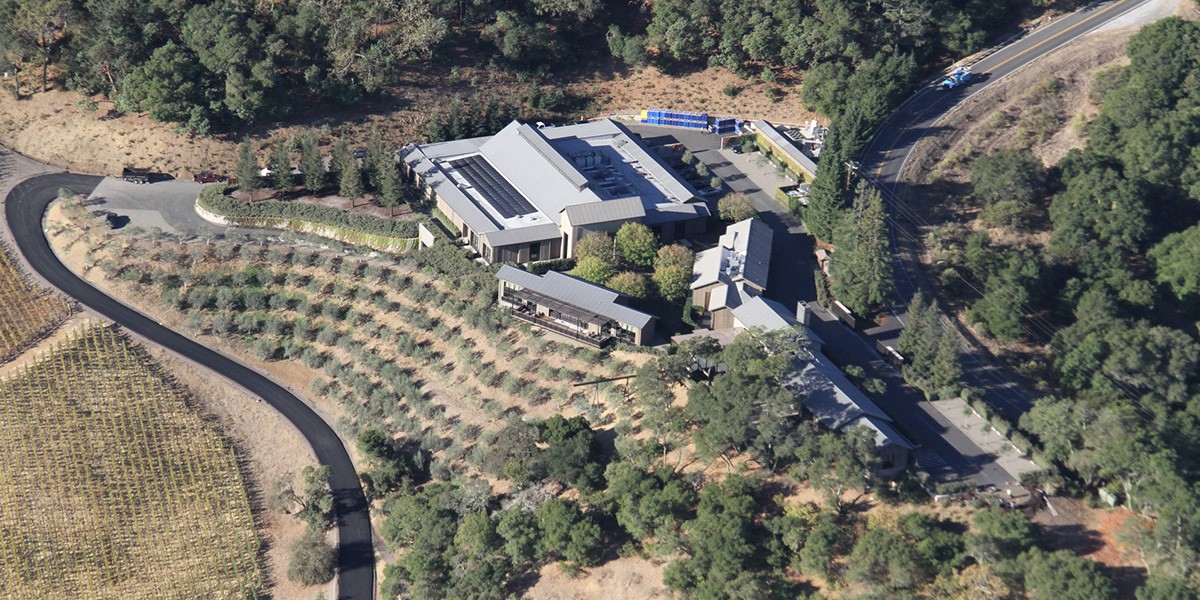 |
SWR Television, 5.50 a.m.
The king of white wines, the Riesling, reigns in the Rheingau. Between Walluf and Lorchhausen lies its kingdom. But there is much more to discover on this stretch of the Rhine.
hr-television, 2.15 p.m.
In France, it has long been rumoured that Bordeaux is a serious rival to Paris. Bordeaux produced the philosophers Michel de Montaigne and Montesquieu, its architecture is a prime example of classicism, and Bordeaux is the world capital of wine. A visit to the wine museum "Cité du Vin" is a must. Christine Seemann turns her back on the coast and heads east into the heart of the Bordelais to Saint Émilion. The gently hilly wine-growing region was the first to be put on the UNESCO World Heritage List. For Saint Émilion is a synthesis of the arts, as it nestles picturesquely into the landscape, full of enchanted corners and architectural treasures. And wine is the elixir of life around which everything revolves. In September, the Jurade, the wine fraternity, gives permission for the grape harvest - a reason to celebrate. An emotional spectacle that enchants not only wine lovers.
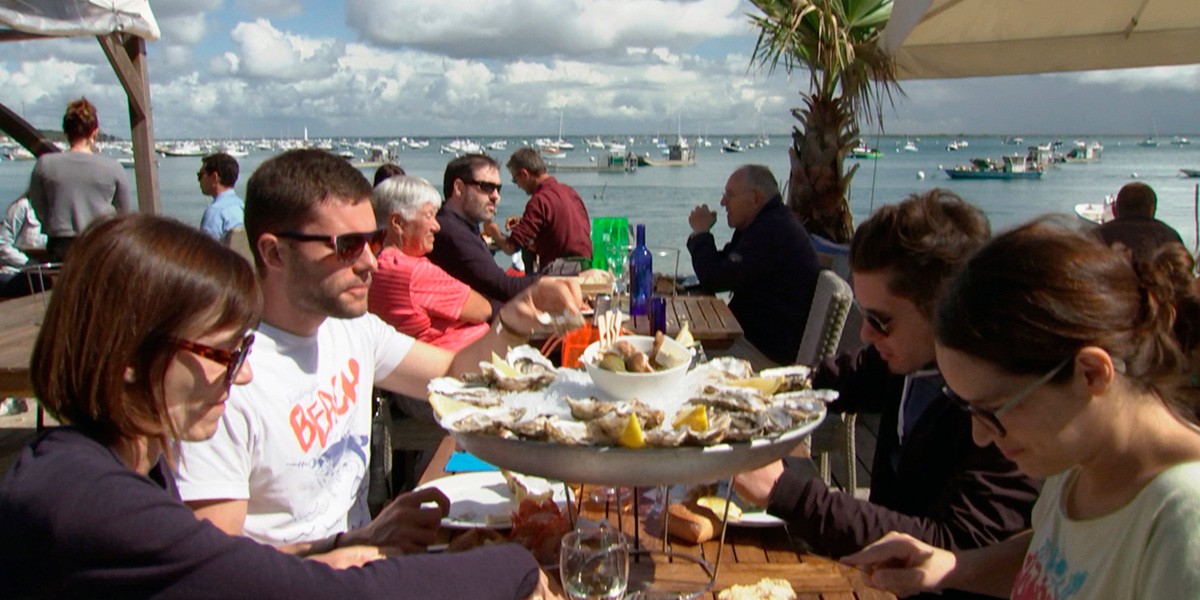 |